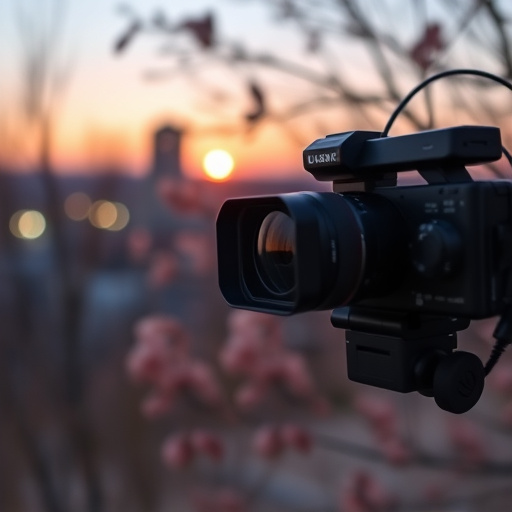Understanding spy camera detection techniques is crucial for concealing them effectively. Advanced methods include infrared and radio frequency scanning, as well as heat map technology to locate devices. Combining these signal scanning techniques with physical inspections offers a robust defense against covert surveillance, vital for securing private and public spaces. This knowledge is key to mastering how to conceal spy cameras.
Uncover the art of hidden recording device detection with our comprehensive guide. In today’s digital age, spy cameras pose a subtle yet significant threat to privacy. This article delves into advanced techniques for identifying these concealed threats. From understanding spy camera detection methods to exploring heat maps and countering stealthy devices, we provide essential insights on how to conceal spy cameras effectively. Navigate the world of hidden recording device signal scanning with our expert tips and stay ahead of potential privacy breaches.
- Understanding Spy Camera Detection Techniques
- Advanced Signal Scanning Methods
- Using Heat Maps for Hidden Cameras
- Countering Stealthy Recording Devices
Understanding Spy Camera Detection Techniques
Understanding Spy Camera Detection Techniques is a crucial step in learning how to conceal them effectively. Advanced technology has made it easier to detect these hidden devices, with various methods employed to scan and identify signals. One common approach is using specialized equipment that can pick up on infrared or radio frequency (RF) emissions, which are often used by spy cameras for data transmission. These devices can detect even the faintest of signals, making them valuable tools in identifying hidden recording devices.
Additionally, visual inspection has become a standard practice, especially when dealing with high-risk areas. Professionals use advanced optical equipment and expert knowledge to scan for subtle signs of camera placement, such as irregular reflections or lens distortions. By combining these detection techniques, one can significantly enhance the chances of locating and neutralizing spy cameras, ensuring a higher level of security in private and public spaces alike.
Advanced Signal Scanning Methods
In the realm of hidden recording devices, advanced signal scanning methods play a pivotal role in detecting even the most discreet spy cameras. Modern technology offers sophisticated techniques to conceal and uncover these surveillance tools. One such method involves utilizing infrared (IR) sensors, which can detect heat signatures emitted by electronic devices, revealing hidden cameras that might be operating in invisible modes. Additionally, radio frequency (RF) signal scanning is a powerful tool; by analyzing RF emissions, experts can pinpoint the location of covert recording devices, as many spy cams transmit data using wireless signals.
These innovative approaches require specialized equipment and expertise to implement effectively. Professionals use hand-held scanners or software-driven systems to sweep through areas, identifying unusual electromagnetic signatures that could indicate the presence of hidden cameras. By employing these advanced signal scanning methods, one can stay ahead in the game of privacy protection, ensuring that spy cameras are not only detected but also concealed, making it a challenging task for would-be intruders to gather covert information.
Using Heat Maps for Hidden Cameras
Heat maps are an innovative and effective method for detecting hidden cameras, especially in situations where traditional visual inspections are challenging. By utilizing thermal imaging technology, heat maps can visualize temperature variations within a space, revealing potential hotspots that might indicate the presence of hidden recording devices. These maps work by capturing and analyzing the infrared radiation emitted from objects, highlighting areas with distinct thermal signatures.
This technique is particularly useful for professionals in fields like security and law enforcement who need to discreetly check for spy cameras. Heat map analysis allows them to identify not only visual camera lenses but also small sensors, often difficult to spot with the naked eye. This method provides a non-intrusive way to assess potential privacy risks, making it an essential tool in learning how to conceal spy cameras effectively.
Countering Stealthy Recording Devices
Countering the growing threat of hidden recording devices requires a multi-faceted approach, especially as these devices become increasingly sophisticated and harder to detect. One effective method is implementing signal scanning techniques that can identify unusual or unauthorized wireless signals, which often indicate the presence of spy cameras or other hidden recording equipment. By employing advanced software and hardware tools, security professionals can monitor and analyze radio frequency (RF) and infrared (IR) emissions, pinpointing devices operating in stealth mode.
Additionally, physical inspections and regular maintenance of spaces where privacy is a concern are vital. This includes checking for suspicious hardware, cables, or attachments that might suggest the presence of hidden cameras. How to conceal spy cameras from such checks involves advanced design and positioning techniques, making it a challenging task for unauthorized recorders. Combining technological vigilance with thorough physical examinations offers the best defense against these covert threats.
Hidden spy cameras pose a significant threat to privacy, but with advanced signal scanning methods and innovative techniques like heat map analysis, it’s possible to stay one step ahead. Understanding how these devices operate and employing strategic countermeasures can help prevent unwanted surveillance. By staying informed about the latest in spy camera detection, individuals and organizations can better protect themselves from these clandestine recorders, ensuring a safer digital environment.
